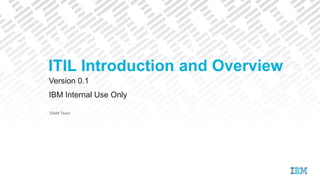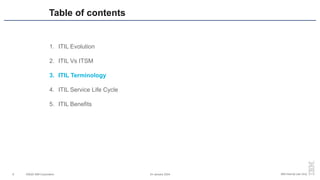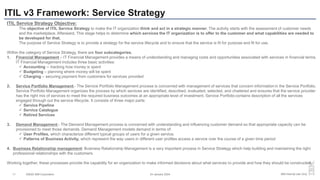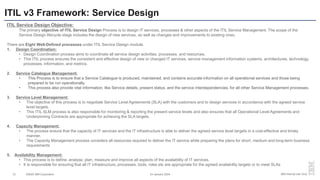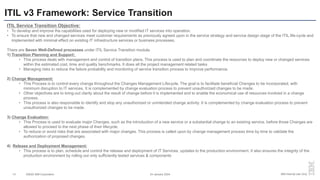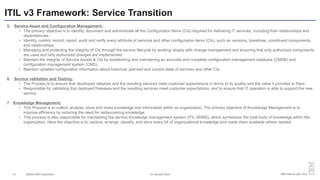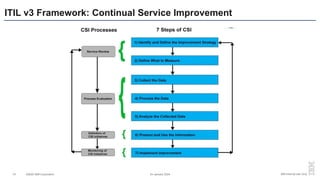This document provides an overview of ITIL (Information Technology Infrastructure Library). ITIL is a framework that provides best practices for IT service management. The document discusses the evolution of ITIL, compares ITIL to ITSM, defines key ITIL terminology, describes the ITIL v3 framework and five stages of the service lifecycle, and outlines some of the benefits of adopting ITIL.
